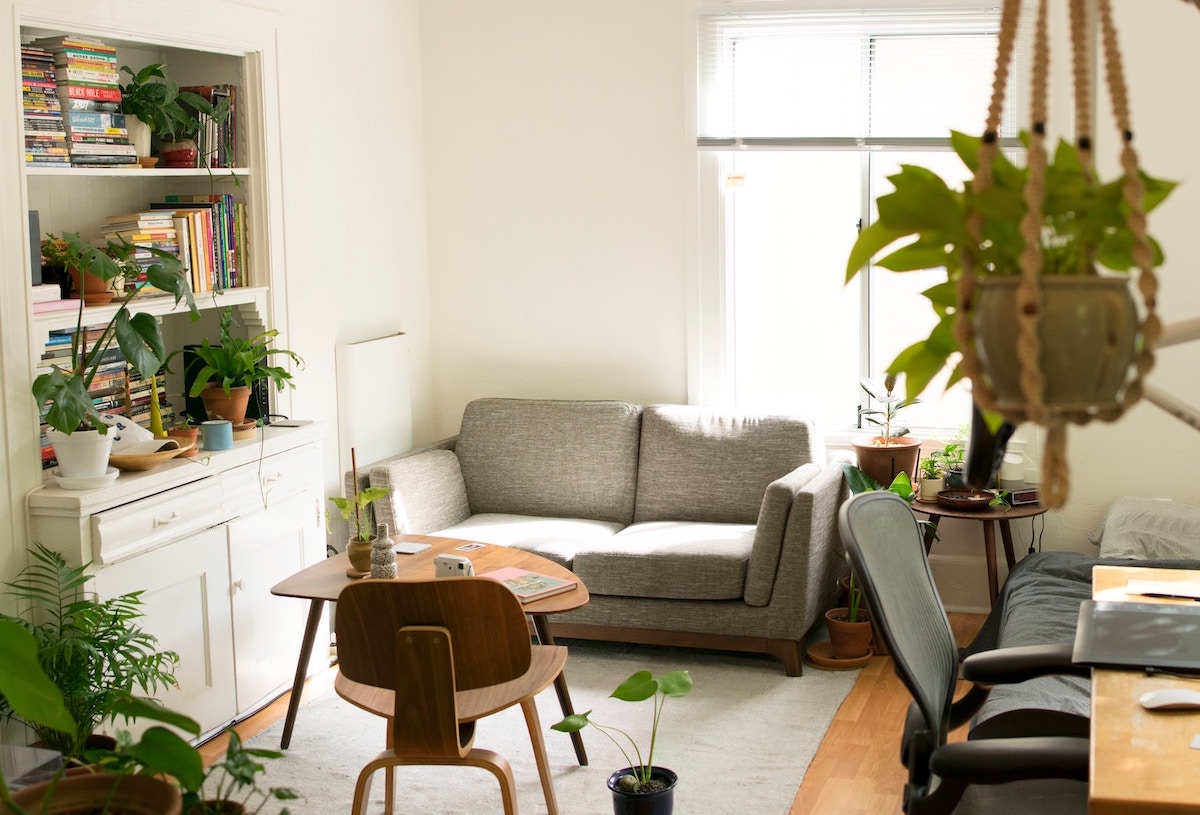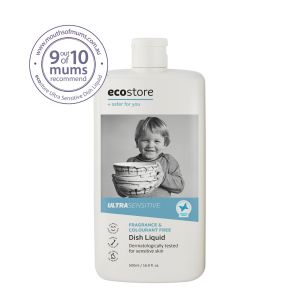
We tend to think that air pollution is something that happens outside, with smog and haze from vehicles, factories and fires. But the air inside our homes can actually be worse for our health, thanks to formaldehyde, fire-retardants, and the volatile chemicals from fragrances used in conventional cleaning products. Some pollutants sneak in on a new mattress, with a fresh coat of paint or in our carpet.
Indoor air pollution is associated with asthma, chemical hypersensitivity, and even cancer. Chemical concentrations of many pollutants can be far greater than outdoor levels. This is increasingly an issue because newer buildings are more airtight, so airborne irritants can’t escape. On the whole, we’re also spending more time indoors.
There are a range of causes for indoor air pollution. Many new items off-gas chemicals, especially when they’re new. You’ll also find dust mites, mould and pet dander in the mix. Kids, those with asthma and eczema, and elderly or immune-compromised people are often the most sensitive to indoor pollutants, but the rest of us may not know we’re being affected until years later.
With all this in mind, we’ve compiled six simple ways you can clear the air in your home.
Give your floors a clean sweep
Using a vacuum cleaner with a HEPA filter, powerful suction and rotating brushes, reduces dust mites, pollens and pet dander – and ensures these aren’t released via the exhaust. You can also minimise other toxins, like brominated fire-retardant chemicals (PBDEs).
Pay particular attention to high traffic areas, and include walls, under furniture and upholstery. For best results, vacuum twice a week and clean or replace your filter regularly. Mopping picks up the dust that vacuuming leaves behind. Mopping with a dash of concentrated, plant-based cleaner in a bucket of warm water will pick up what the vacuum leaves behind.
You, your pets and your guests track in chemicals. By putting a large enough doormat at each door, you’re reducing the dirt, pesticides, and other pollutants that enter your home, even if people (and pets) don't deliberately wipe their feet. Even better, ask guests to take off their shoes when they come inside. And it’s a good idea to keep slippers and comfy socks near the door – to slip into when you get home. It’s a welcome break for weary feet too.
Make your home a smokefree zone
Cigarette smoke contains more than 4,000 chemicals – a huge contributor to indoor air pollution. Research shows that secondhand smoke can increase a child's risk of developing respiratory and ear and infections, asthma, cancer, and sudden infant death syndrome (SIDS). If you’re trying to quit, Quitline has heaps of resources and support available to help you. But if you relapse, make sure you don’t smoke inside the house. If you just can't quit, for the sake of your loved ones, try to only smoke outside.
Keep the humidity healthy
While many parts of New Zealand and Australia are damp and humid, it’s worthwhile keeping your home dry if you can. Maintaining 30%-50% humidity by using a humidifier and/or air conditioner (most modern heat pumps have this functionality) helps control dust mites and mould. An air conditioner also reduces your indoor pollen count, a bonus for seasonal hayfever sufferers.
Luckily, there are plenty of easy ways to reduce moisture in your home. Vent your clothes dryer outside, and open a window or use an extractor when cooking, showering or running the dishwasher. Fix leaks and dripping pipes to prevent mould.
Empty your heat pump and dehumidifier drip pans, if you can. Don't overwater your indoor pot plants – apart from potentially killing them, it’ll also introduce more moisture into the air.
Make your house a greenhouse
Like living air purifiers, the roots and foliage of indoor plants have been shown to work in tandem to absorb chemical pollutants. But that’s not all. The University of Technology in Sydney, found that indoor plants significantly improve mood, and reduce anxiety, fatigue, anger and depression.
Think back to science class. During photosynthesis, plants absorb carbon dioxide and release oxygen. Some plants – including succulents, certain orchids, bromeliads and snake plants – release oxygen at night. This makes them excellent companions for your bedroom. Plants also emit phytochemicals, which create an unfriendly environment for allergy-causing mould and bacteria.
- Sansevieria trifasciata (aka snake plant, or mother in law’s tongue) and Dracaena ‘Janet Craig’ suck nasties like trichloroethylene and formaldehyde out of the air.
- Aloe Vera releases oxygen and removes carbon dioxide at night, making it ideal for bedrooms and other low-light rooms.
- Dragon Tree sucks xylene, trichloroethylene and toluene (a solvent added to petrol and nail polish remove) out of the air.
- Ficus ‘Amstel King’ is a good all-round air purifier.
- Gerbera adds a splash of color to the room and removes a variety of chemicals like formaldehyde and benzene from the air.
- Peace Lily cleverly removes a range of alcohols and chemical vapours, including acetone, benzene, ammonia, formaldehyde and xylene, as well as being really effective for removing several toxins.
- Spider Plant removes 96% of the carbon monoxide and 99% of the nitrogen dioxide within a sealed chamber, according to NASA research.
Tip: If you have pets or young kids, make sure your pot plants aren’t poisonous if eaten.
Reduce your reliance on fragrance
You may connect that strong pine smell with a clean home. But many synthetic fragrances are derived from petroleum and emit potentially nasty chemicals into the air. These include conventional detergents, fabric softeners, and air fresheners – and individual fragrance components don’t have to be listed on the label. Fragrances may be tested for skin irritation, but not for adverse health effects when inhaled.
Chemicals commonly used in fragrances, like diethyl phthalate, benzene and aldehydes, are also known carcinogens. For example, phthalates have been shown to disrupt hormones in animals.
The good news is that these nasty chemicals can be easily avoided in your home.
- Look for brands that list fragrance components.
- Look for fragrance free options (for allergy sufferers), or natural fragrances derived from essential oils .
- Use less cleaning product, and replace it with a little more elbow grease.
- Avoid aerosol formats: this includes hairspray, fly spray, deodorant, air fresheners, carpet cleaners and furniture polish.
- Open windows, to prevent toxic chemicals building up inside. If someone in your household has a pollen allergy, use a filtered air conditioning system.
Go minimal and au naturel
Fragrance can be a trigger for sensitive people with allergies, causing reactions like dizziness, headaches and nausea. While it’s now widely mandatory to declare potential allergens in cosmetics, only some brands (including ecostore) disclose all the ingredients in their cleaning products.
We use essential oils and fractions extracted from plants like citrus, eucalyptus, lavender and patchouli in most of our products – which are safer, more sustainable alternatives to synthetic fragrances from petrochemicals. But these may still cause a reaction for some sensitive people. So we disclose any potential allergens in our products on the label, and suggest that if anything you use around the home is causing a reaction, that you stop using it.
If someone in your home is sensitive even to naturally derived fragrances, consider switching to fragrance free products for your cleaning and personal care.




